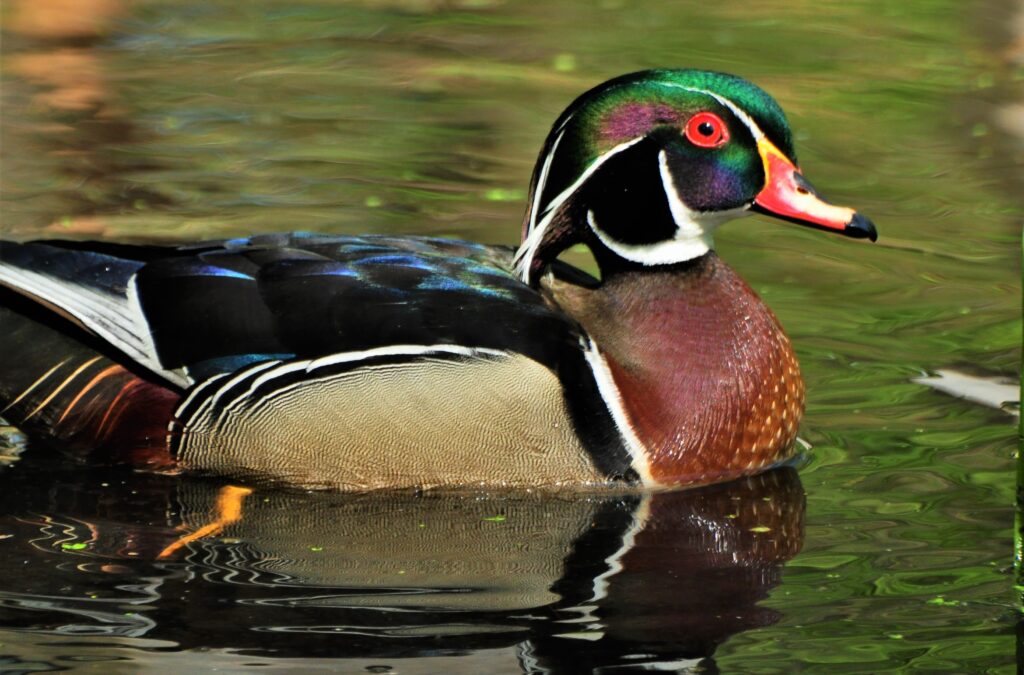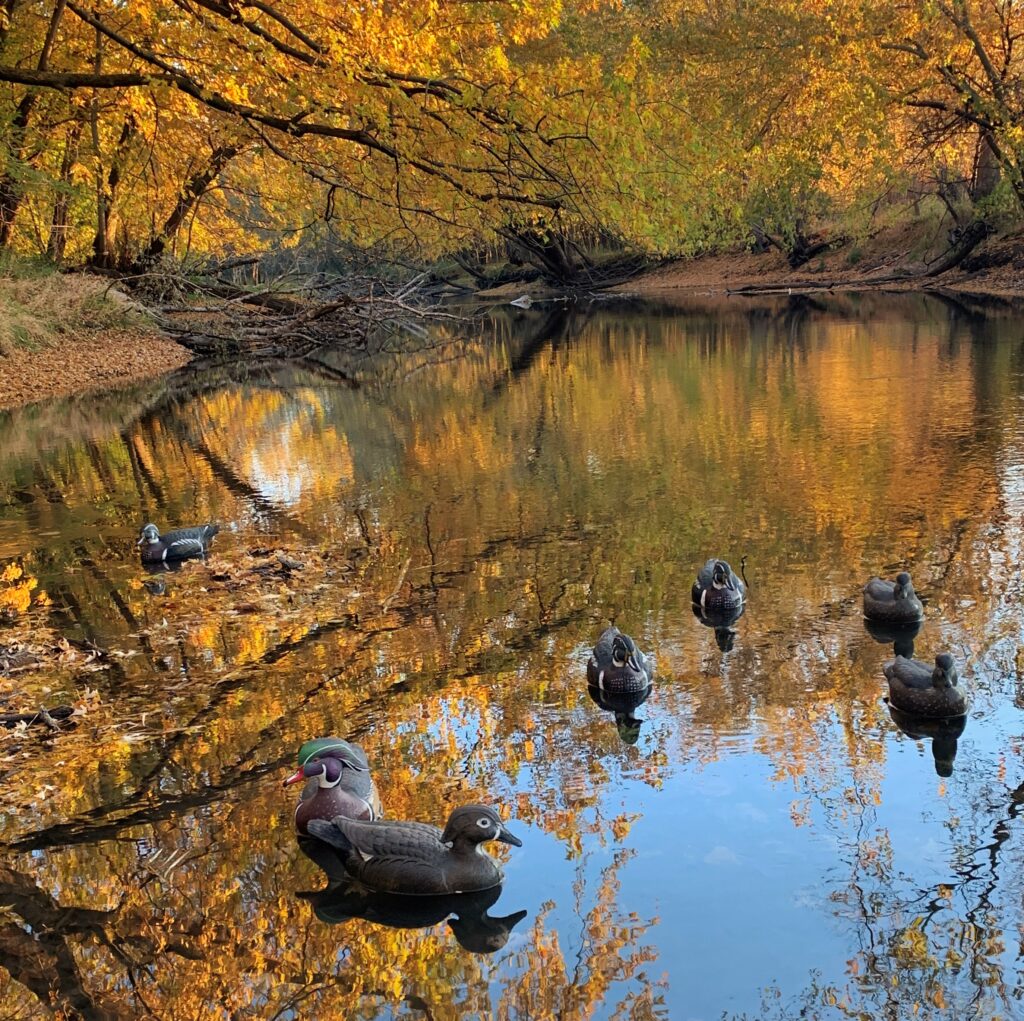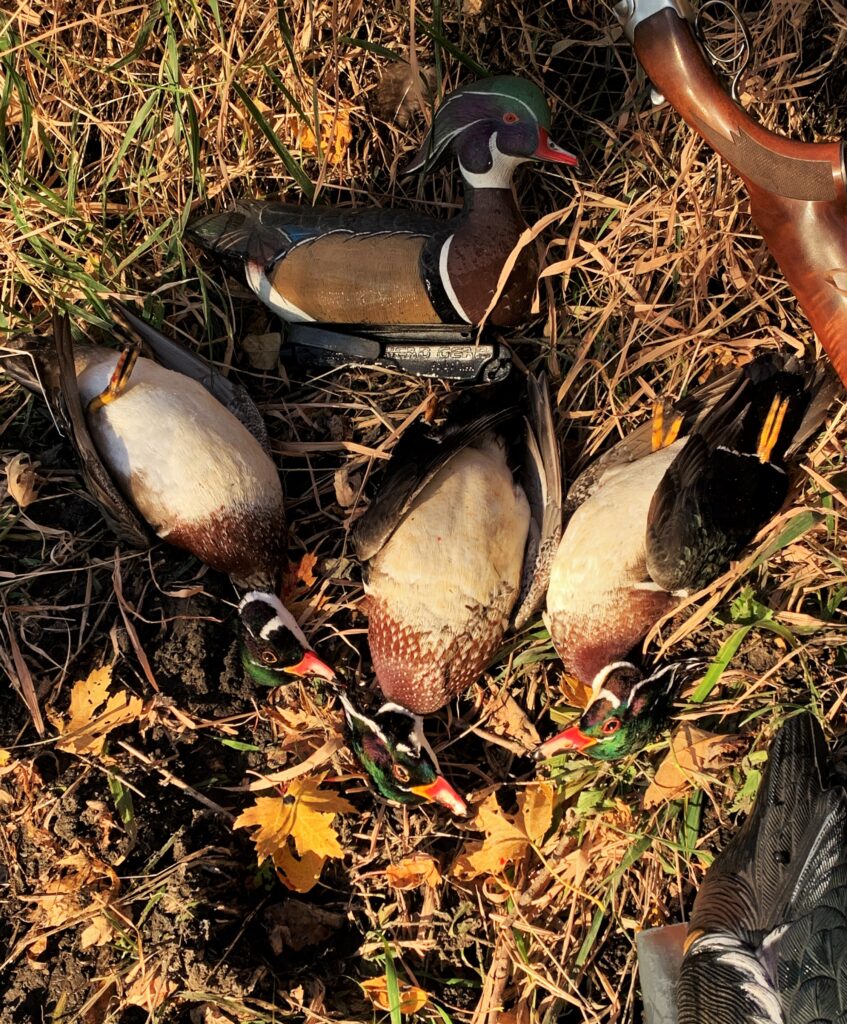Photography courtesy of Lowell Washburn, all rights reserved.
With temperatures headed for the basement; it was time to make my move
Have I ever told you how much I love wood ducks? They’re unique in every way and I’ll do whatever it takes to watch, photograph and, of course, to hunt them. One of the many traits that makes them so endearing is that woodies choose to live in the most picturesque habitats the landscape has to offer. Pursuing them means that you’ll find yourself sitting in spectacular autumn settings that are almost as beautiful as the birds themselves.

The only thing that I don’t like about wood ducks is that they don’t stick around. Although the birds are extremely plentiful during late September and early October, the season’s first frosts may trigger the annual exodus. By late October, most woodies will have vacated their Northern Iowa habitats. Migrations are usually delayed in the balmier southern parts of the state.
Needless to say, this year’s mid-October weather has offered little incentive for wood ducks to linger. With nighttime temps repeatedly dropping in the lower 20s, area wetlands have undergone an abnormal and unwelcome cycle of freezing and thawing. Today [October 18] was the absolute worst. With a predicted low of just 18 degrees, there was little doubt that what few woodies remained in the area would throw in the towel. Louisiana, here we come.
I should also mention that there’s another thing I love about wood ducks; and that is eating them. The flavor of slow roasted, acorn fattened woodies is simply out of this world. But this week, the message was clear. If I hoped to collect another meal or two, I had better make my move. Weighing my choices, I decided that a trip to the Winnebago river would be my best option – at least the river wouldn’t be frozen. Unfortunately, the weather proved to be even worse than predicted. By the time I left home an hour and a half before daylight, the mercury had already fallen to 17. Making matters even worse, the local radio announcer said the windchill was down to 6 degrees and falling.
“Who in the world has ever heard of hunting wood ducks in 6-degree wind chills,” I asked myself.

Arriving at the Winnebago, I pulled on my waders, grabbed the decoys, and headed for the middle of the section. Arriving at a snag filled bend, I tossed out my small flock of wood duck counterfeits and dug into the bank. Wood ducks are early risers; but when legal shooting arrived there were no ducks. Things were not looking good. The situation improved a few minutes later, however, when a lone drake appeared through a break in the trees and dropped straight toward the decoys. Shouldering my 28-gauge, I missed with the first barrel and then dropped the duck with a second shot. The bird was a fat and colorful drake. For me, this single duck was all it took to make getting out of bed well worth the effort — and then some.

Following a twenty-minute period of duckless silence, a group of six or seven woodies suddenly appeared from upriver. Most of the ducks were drakes, and I managed to collect a pair. I couldn’t believe it – barely sunrise and I had a three-bird limit of wood ducks in the bag. What a gift!

In addition to the decoys, I had also packed in a pint thermos of hot coffee. Settling against a nearby deadfall, I poured a steaming cup and savored the moment. There was plenty to enjoy. By now, the sun had climbed high enough that the early rays were beginning to ignite the colors of the mature maples lining the bank. Leaves were letting go by the dozens, drifting down to the water like giant orange and yellow snowflakes. A nearby family of beavers was busily preparing for winter by cutting and stacking multiple maple saplings. It had gotten colder since my arrival, and ice was beginning to form along the margin of the bank. Meanwhile, a group ruby-crowned kinglets searched the vegetation for gnats or midges. The kinglets seemed frantic. If the wood ducks hated this weather, I’m guessing that the tiny kinglets hated it even more.

I eventually ran out of coffee. The wind was continuing to rise, and I decided to head home. After I pulled unto the road, the radio weatherman announced that it was going to warm up for the coming weekend. Whether it does or not, the peak of this year’s wood duck migration has literally gone south. Sadly, we won’t see those beautiful birds again until late March or early April. In the meantime, I’ll keep remembering that spectacular autumn day when the weather felt more like winter than mid-October and a final handful of colorful wood ducks came to the decoys.

 Tom Cope
Tom Cope Sue Wilkinson
Sue Wilkinson Susan Judkins Josten
Susan Judkins Josten Rudi Roeslein
Rudi Roeslein Elyssa McFarland
Elyssa McFarland Mark Langgin
Mark Langgin Adam Janke
Adam Janke Joe Henry
Joe Henry Kristin Ashenbrenner
Kristin Ashenbrenner Joe Wilkinson
Joe Wilkinson Dr. Tammy Mildenstein
Dr. Tammy Mildenstein Sean McMahon
Sean McMahon